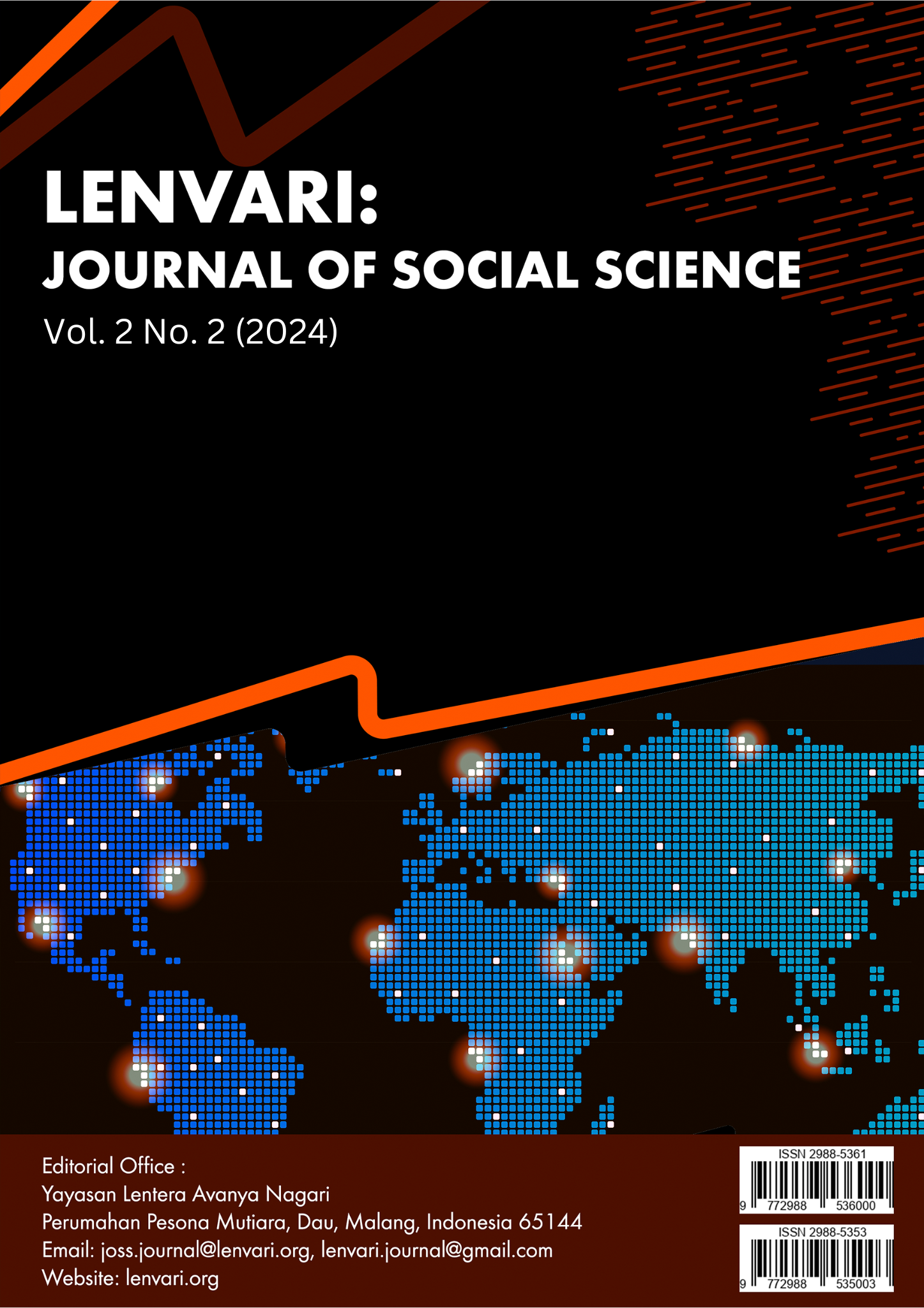Perbandingan Dukungan Media Sosial terhadap Anies dan Prabowo di Twitter dan Tiktok
DOI:
https://doi.org/10.61105/jss.v2i2.136Keywords:
political communication, social media, TikTok, TwitterAbstract
Political participation is one of the benchmarks of the success of a democratic country. The digital era, with the rapid development of information technology and the internet, makes the world seem borderless. According to McLuhan (1964), the use of the Internet through various platforms allows people to exchange information in diverse ways and forms (Anggraeni et al., 2020). One of the most popular ways to exchange information today is through social media. Social media as a political communication tool, is a new alternative in conveying political messages and as a campaign tool. In Indonesia, the most widely used social media platforms for political communication are TikTok and Twitter. This study employs the literature review method to analyze findings from various previous studies and other reliable sources.The results of this study will compare the majority of Anies and Prabowo's supporters on TikTok and Twitter. The platforms can accelerate the dissemination of information and wield significant power in influencing the mindset and behavior of audiences.
Downloads
References
Alejandro, Jennifer.(2010). Journalism In The Age Of Social Media, University of Oxford, Reuters Institute for the study of Journalism : Hilary and Trinity Terms & Thomson Reuters Foundation
A, M, Morissan. (2008). Manajemen Media Penyiaran: Strategi Mengelola Radio & Televisi Edisi Revisi. Prenada Media Group.
Burke, Peter .(2000). Sejarah Sosial Media, Jakarta : Penerbit Yayasan Obor Indonesia.
Curtis, A. (2013) What is Advertising? (Internet), University of North Carolina. Available from: (http://www2.uncp.edu/home/acurtis/Courses/ResourcesForCourses/Advertising/AdvertisingWhatIsIt.htm l) [Accessed April, 2024)
Donohue, G A, P. J. Tichenor, and C. N. Olien. (1973). “ Mass Media Functions, Knowledge and Social Control” dalam Journalism & Mass Communication Quarterly 50(4):652-659 · December 1973
Doyle, G. (2013) Understanding Media Economics. 2nd ed. UK: SAGE.
Soewadji. (2012) Pengantar Metodologi Penelitian, Mitra Wacana Media, Jakarta.
Sudibyo, Agus. (2004) Ekonomi Politik Media Penyiaran, LKIS, Yogyakarta
Suharyanto, A. and Hidayat, T. (2018). Revealing Medan's Chinese Ethnic Identity in Advertising.
Syarbaini, S., Nur, S. M., & Anom, E. (2021). Teori, Media dan Strategi Komunikasi Politik. Jakarta: Esa Unggul.
Mc.Quail, Denis.(2010).Mass Communication Theory, 6th Edition, London : Sage Publication Ltd.
Wright, Charles R. (1986). Mass Communication: A Sociological Perspective. 3 Sub Edition. New York : Mcgraw-Hill College
Downloads
Published
How to Cite
Issue
Section
License
Copyright (c) 2024 Aliya Nabila Rizki Maharani, Dhyane Permata Widodo, Rheza Falih Akmal Akmal

This work is licensed under a Creative Commons Attribution-ShareAlike 4.0 International License.
















